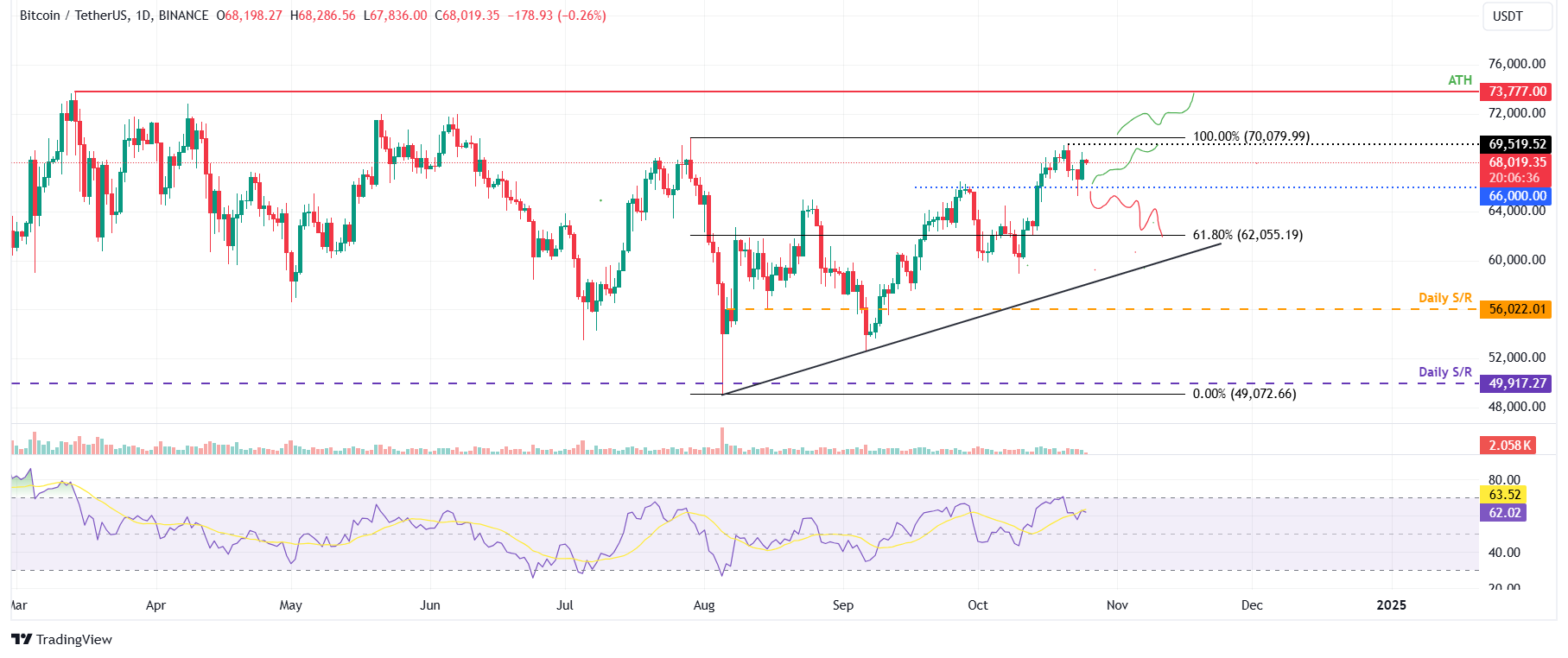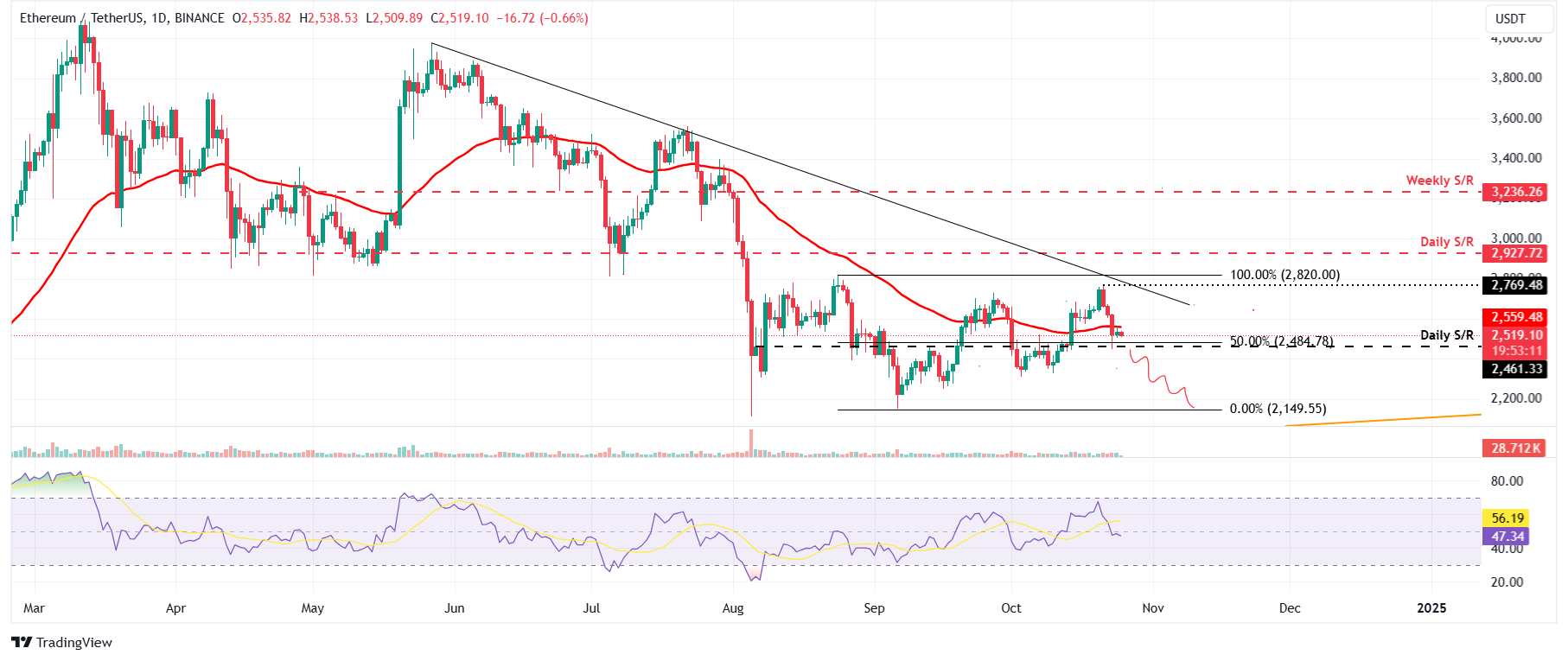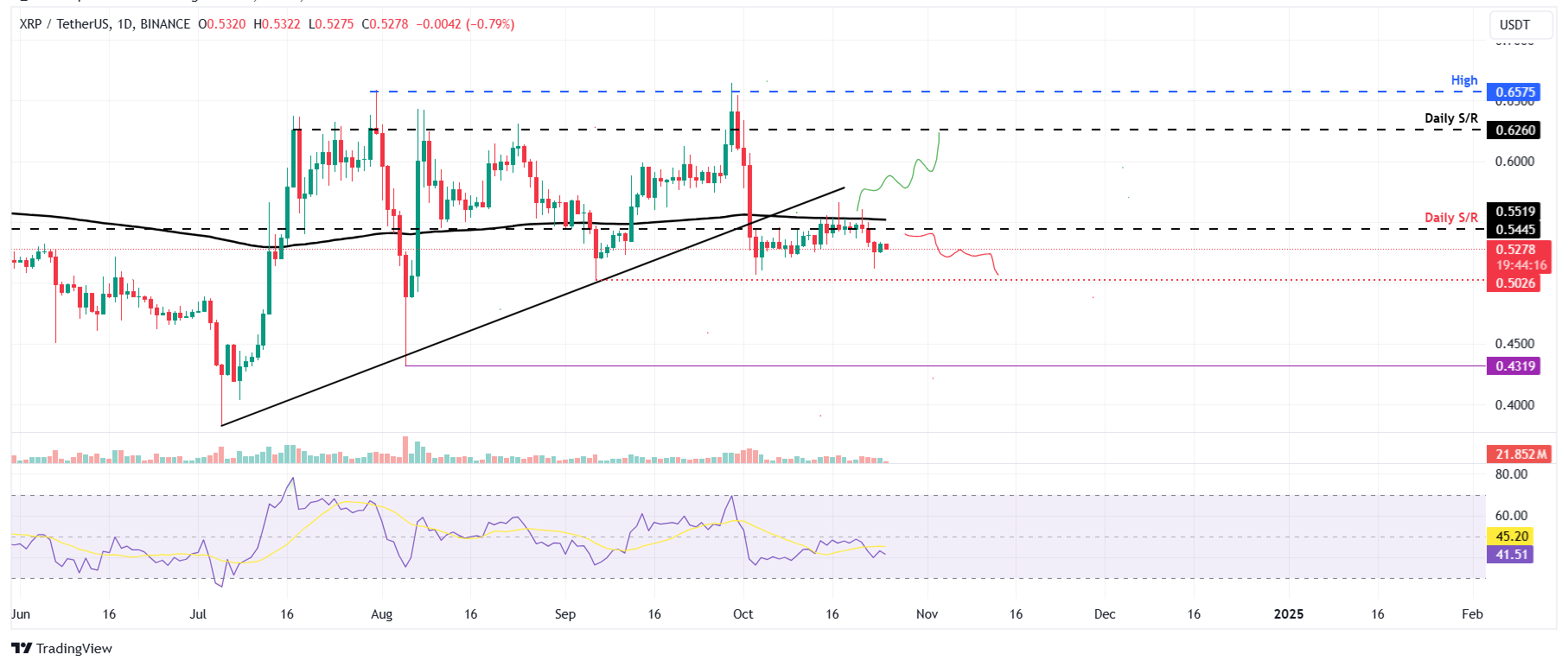- Bitcoin was retested and found support near the $66,000 level, proving that the recovery is certain.
- Ethereum price stabilizes after retesting the daily support level at $2,461. A solid close below would signal a decline ahead.
- Ripple price is rejected at the 200-day EMA at $0.552 and the downtrend may continue.
Bitcoin (BTC) has found support at the key $66,000 level, suggesting a possible recovery. However, Ethereum (ETH) and Ripple (XRP) prices are struggling below important support levels, indicating that the downtrend could continue.
Bitcoin shows signs of recovery after finding support near $66,000
Bitcoin price fell to retest the $66,000 level on Wednesday and found support on Thursday, rising 2.3%. As of this writing on Friday, it is down slightly around $68,000.
If the $66,000 level holds as support, there is a possibility of a retrieval of Monday's high of $69,519. A successful close above $70,000 could extend the rally to retest the next major barrier, which has already surpassed the all-time high of $73,777 set in mid-March.
The Relative Strength Index (RSI) indicator on the daily chart read 60, which is on the upswing after rebounding around the neutral level of 50 on Wednesday, indicating bullish momentum is gaining momentum.

BTC/USDT daily chart
Conversely, if BTC closes below the $66,000 support, it would fall 5.8% to the next support at $62,055, or the 61.8% Fibonacci retracement level (from the July high of $70,079 to the August high). There is a possibility of a retest of the low of $49,072).
Ethereum poised for decline below $2,460
Ethereum price closed below the 50-day exponential moving average (EMA) of $2,559 on Wednesday after encountering resistance near the downtrend line (drawn from multiple highs from the end of May) earlier in the week. Ta. However, it stabilized after retesting the daily support level at $2,461 on Thursday, but faces resistance near the 50-day EMA. As of Friday, it was trading slightly lower at around $2,519.
If ETH closes below the $2,461 support level, it could drop more than 12% and retest the September 6 low of $2,149.
The RSI indicator on the daily chart has fallen to 47, below the neutral level of 50, indicating increasing bearish momentum.

ETH/USDT daily chart
However, if ETH rises and closes above the 50-day EMA of $2,560, it could retest Monday’s high of $2,769.
Ripple price trending down following rejection from 200-day EMA
Ripple price faced resistance from the 200-day EMA $0.551 level earlier this week, falling 3.78% by Wednesday. As of Friday, it was trading slightly lower at around $0.527.
If the 200-day EMA of $0.551 holds as resistance, it could continue lower to retest the September 6 low of $0.502.
The RSI indicator on the daily chart is at 41, below the neutral level of 50, suggesting that the bearish momentum is gaining momentum.

XRP/USDT daily chart
On the other hand, if XRP closes above the 200-day EMA at $0.552, it could continue rising and retest the next daily resistance at $0.626.
Frequently asked questions about Bitcoin, altcoins, and stablecoins
Bitcoin is the largest cryptocurrency by market capitalization and is a virtual currency designed to function as money. This form of payment is not controlled by any particular person, group, or entity and eliminates the need for third parties to participate during financial transactions.
An altcoin is any cryptocurrency other than Bitcoin, but some consider Ethereum to be a non-altcoin because it is these two cryptocurrencies that forks occur. If this is true, Litecoin would be the first altcoin to fork from the Bitcoin protocol and thus be an “improved” version of it.
A stablecoin is a cryptocurrency that is designed to have a stable price, and its value is backed by the reserves of the asset it represents. To achieve this, the value of one stablecoin is pegged to a commodity or financial instrument, such as the US dollar (USD), and its supply is regulated by an algorithm or demand. The main purpose of stablecoins is to provide an on/off ramp for investors who wish to trade and invest in cryptocurrencies. Stablecoins also allow investors to store value, as cryptocurrencies are generally volatile.
Bitcoin dominance is the ratio of Bitcoin's market capitalization to the market capitalization of all cryptocurrencies combined. This clearly shows the interest in Bitcoin among investors. BTC's dominance typically occurs around bull markets, where investors turn to relatively stable, high-market-cap cryptocurrencies like Bitcoin. A decline in BTC's dominance usually means investors are moving capital and profits to altcoins in search of higher returns, which usually causes an explosive rally in altcoins.

